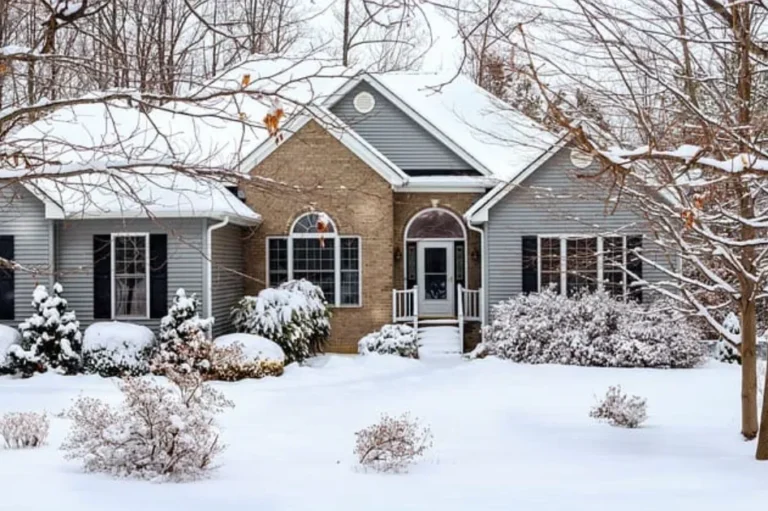Winter can bring unique challenges to roofing, from heavy snowfall to ice accumulation. Homeowners often find that these conditions not only test the resilience of their roofing materials but also call for proactive maintenance to protect their home. Addressing potential winter roofing issues early can prevent significant damage and ensure your roof remains intact through even the harshest winter months. This article covers essential winter roofing tips, types of winter roofing damage, and how a roofing contractor can help keep your home safe.
Why Winter Roofing Maintenance Matters
Regular roof maintenance is essential throughout the year, but it becomes even more critical in winter. Cold weather, moisture, and extreme conditions can worsen small issues, making them major problems that require costly repairs. Winter maintenance can help prevent these issues and keep your roof in prime condition until spring.
Benefits of Winter Roof Care
- Extended Roof Life: Routine maintenance reduces wear and tear, extending the lifespan of your roof.
- Reduced Heating Costs: A well-maintained roof prevents heat loss, which lowers energy bills.
- Peace of Mind: Proactive care can ease worry during winter storms, knowing your roof is prepared.
Winter roofing maintenance can address small problems before they lead to leaks, insulation issues, or structural damage. A reliable roofing service like Heins Contracting offers expertise to help you handle winter-specific roofing needs, from inspections to emergency repairs.
Common Winter Roofing Issues
Winter brings several unique challenges to roofs. Some of these issues may not be evident until the temperature drops, but awareness of these problems can save time and money.
1. Ice Dams
Ice dams form when snow melts, slides down the roof, and refreezes near the edges. These ice accumulations can block drainage, causing water to back up under shingles and leading to potential leaks.
- Prevention Tips: To prevent ice dams, ensure proper insulation and ventilation in the attic, which keeps heat from escaping and melting snow unevenly.
- Solutions: Install ice and water shields or use heat cables to reduce ice buildup along roof edges.
2. Heavy Snow Accumulation
Snow adds weight to the roof, and when it piles up, it can put pressure on roofing materials and underlying structures. Particularly after large snowfalls, this weight can exceed a roof’s load-bearing capacity, potentially causing sagging or even collapse in extreme cases.
- Prevention Tips: Regularly clear snow off your roof if it’s accessible, or hire professionals for safer snow removal.
- Solutions: Installing a sloped roof or using snow guards helps snow slide off rather than accumulate.
3. Condensation
Condensation occurs when warm, moist air rises from inside the house and meets the cold roof deck, leading to moisture buildup. Over time, this moisture can cause mold, rot, and insulation damage.
- Prevention Tips: Proper attic ventilation is essential for allowing moist air to escape, reducing the risk of condensation.
- Solutions: Consider adding vents to the attic space if you notice signs of condensation, like water stains on ceilings.
Working with an experienced roofing company like Heins Contracting can help you manage these issues effectively and keep your roof safe and sound throughout winter.
Tips for Preparing Your Roof for Winter
The best way to avoid winter roofing problems is through proactive preparation. Here’s how to get your roof ready for winter:
1. Schedule a Roof Inspection
Having a professional inspection before winter can make a significant difference. Roofing professionals can identify vulnerabilities, such as missing shingles, loose flashing, or areas where ice dams may form. Repairing these issues now can prevent larger, costlier repairs in the coldest months.
If you need assistance, searching for a reliable “roofer near me” can help you find a professional to ensure your roof is prepared for winter.
2. Clean Gutters and Downspouts
Clogged gutters lead to water backup, increasing the chances of ice dams. Make sure gutters are free of leaves, twigs, and other debris before winter arrives.
- Tip: Install gutter guards to keep debris out, which can make winter maintenance easier.
- Tip: Check that downspouts direct water away from the foundation, preventing water damage to the home.
3. Trim Overhanging Branches
Snow-laden branches hanging over the roof can be dangerous. If they break off, they can damage roofing materials or even puncture the roof. Trimming overhanging branches helps reduce these risks.
- Tip: A clear space around the roof prevents additional debris and allows for safer snow removal.
4. Add Extra Insulation
Proper attic insulation minimizes heat loss, which helps prevent ice dams and reduces energy costs. A well-insulated attic will keep the roof deck colder, preventing snow from melting and refreezing near the edges.
- Tip: Insulation combined with effective ventilation is essential for year-round roof health.
Emergency Roofing Repairs in Winter
Despite the best preparation, some roof damage may still occur during winter storms. Strong winds, ice, or falling debris can cause immediate issues that need prompt attention. If you find yourself facing roof damage mid-winter, reach out to a trusted roofing company like Heins Contracting for emergency repair services.
Common Winter Roofing Repairs
- Shingle Replacement: Cold weather can make shingles brittle, leading to cracks and breakages.
- Flashing Repair: Leaks often occur around vents, chimneys, and other protrusions, so keeping flashing secure is essential.
- Waterproofing: Adding or reinforcing waterproofing measures can be beneficial if leaks or water damage are detected.
Final Thoughts on Winter Roofing
Winter is a challenging time for roofs, and the season’s demands can strain even well-maintained roofs. Proactive maintenance and timely repairs are essential to avoid costly damage and ensure your roof’s durability through the cold season. Partnering with experts like Heins Contracting can make winter roofing simpler and safer, providing peace of mind and a reliable roof that’s prepared for whatever winter has in store.
